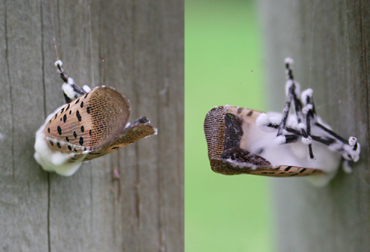What’s Happening with the Spotted Lanternfly?
October 3, 2022
Whether you have seen it around campus or swarming around trees in your yard, everyone in New Jersey now knows of Lycorma delicatula. Since their introduction to Pennsylvania and New Jersey, this planthopper has noticeably changed. The most salient change being its flight; the lanternfly is no longer considered a “glider,” but rather a “flyer.” They now fly at the altitude they launched from rather than immediately descending. Moreover, they aren’t as dangerous as we once thought; while they exert stress on the host tree, they are incapable of killing it and can only make it vulnerable to stressors, like certain fungi and bacteria. However, they are still an exotic species that has cost $324,000,000 per year in Pennsylvania alone. Thus, researchers are considering possible biocontrol agents due to a lack of natural predation. This includes parasitoid wasps known to attack lanternfly egg masses, such as Dryinus browni and Anastatus orientalis, which have kept Chinese populations in check. Furthermore, they have found that the genus Beauveria, a parasitic fungus, has killed many nymph and adult lanternflies.

